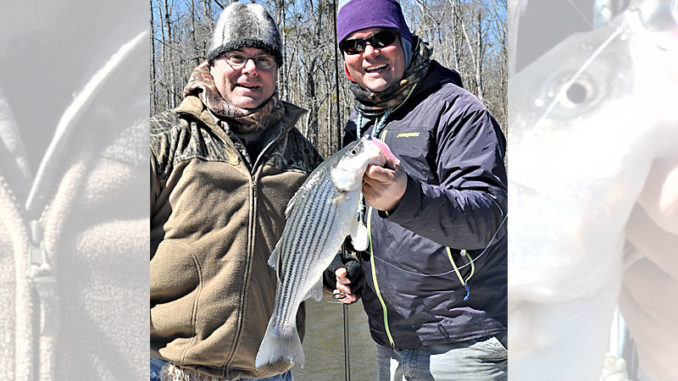
Staying warm is great, catching stripers is better
Sportsmen usually attend boat shows and fishing seminars across North Carolina in February. They were all canceled this year due to COVID-19. But if all they’re doing instead is sitting inside where it’s warm, they’re missing out on some great winter fishing for stripers on three of the coastal river systems that drain northeast and east-central North Carolina: the Neuse, Pamlico and Roanoke.
“Basically, in winter, I’m fishing the lower Roanoke for stripers,” said Richard Andrews of Bath, N.C. Andrews said the area holds a resident striper population that doesn’t return to the Atlantic Ocean after the end of the spring spawn.
“They spawn but stay in the lower part of the Roanoke or might go out into (Albemarle Sound) for the summer,” said Andrews, who owns Tar-Pam Guide Service (252-945-9715).
Winter stripers concentrate in river channels, feeder creeks, oxbows and “guts” because of abundant blueback herring and alewives that spawn in those areas this month.
“American and hickory shad spawn at the same time,” Andrews said. “Stripers aren’t much interested in shad, but they sure like herrings.”
Andrews hunts for fish on main-river ledges in the Roanoke River from Jamesville to Bachelor Bay.
A variety of lures work this month
“We’ll throw ½-ounce jigheads with 5-inch Z-Man plastic jerkbaits at river channels,” he said. “Sometimes, fish will be in the swamps, depending on the water level, but I mostly fish from 8 to 45 feet deep, close to the bottom, for schooled fish I see on a high-definition side-scan or a down-imaging scanner.”
Andrews lets his lures fall to the bottom, then hops or jigs them. If stripers attack baitfish on the surface, he casts a white Zara Spook topwater lure at them.
If the topwater bite shuts off, Andrews bounces a Z-Man split-tail Fluke off the bottom in white, yellow or pink, smeared with some fish-attractant gel.
His tackle includes a 7-foot, medium-action rod fitted with a baitcaster or spinning reel spooled with braided line.
“I like 10-pound Sufix braid,” Andrews said, “because coastal rivers are a marine environment, so that means sharp stuff, such as barnacles and even edges of metal in the water. Braid saves a lot of cut-offs, is strong and can handle a striper’s runs.”
Anglers may experience 30 to 50 striper days, even 100 fish if the bite is especially hot.




Be the first to comment